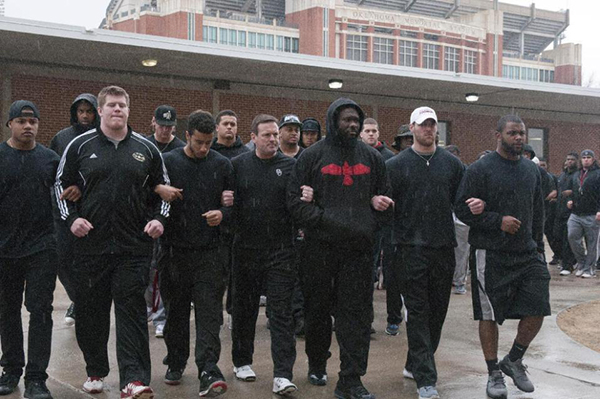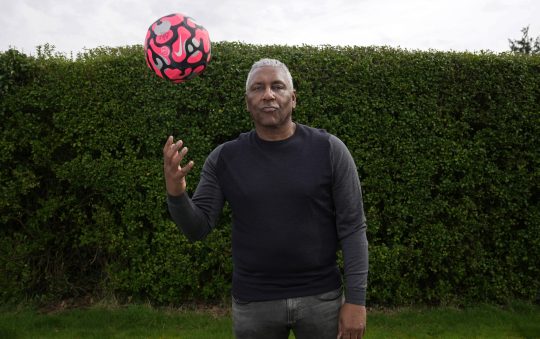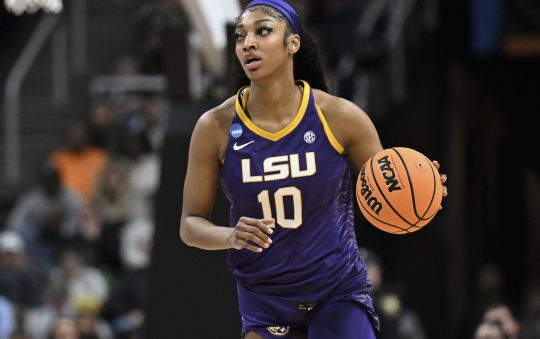
FORT LAUDERDALE, Fla. (AP) — On a balmy morning in south Florida, Baker Mayfield and his Oklahoma teammates goofed around beneath the swaying palms as they posed for a picture in front of the Orange Bowl logo, their tight bond forged by the ups and downs of a long season — the grueling practices, the lonely hours in the weight room, the incessant scrutiny that comes with playing in a high-profile program.
For the Sooners, though, it goes deeper than that.
When a racist video shot by members of an Oklahoma fraternity went viral last March, exposing an ugly side to campus life and the isolation that many African-American athletes feel, the football team took a stand.
In many ways, that’s where the Sooners (11-1) began their journey to the College Football Playoff, setting up a semifinal game against top-ranked Clemson (13-0) in the Orange Bowl on New Year’s Eve.
“It was a huge thing that we had to deal with,” receiver Sterling Shepard said Monday. “It could have split the team in either of two directions. The team could’ve went downhill, because you had a group of guys that believed something and another group of guys that believed something. But we were able to come together as a team and kind of work that thing out.”
The nine-second video showed members of Sigma Alpha Epsilon’s Oklahoma chapter singing a song that used a racist slur for black people and referenced lynching.
The Sooners halted spring practice in protest, providing a glimpse of the power college athletes can have when they dressed in all black and walked arm-in-arm at Owen Field. It was a precursor to Missouri’s black players taking an even stronger stand, threatening to boycott a game over the lack of response to a series of racial grievances, leading to the resignation of the university president last month.
“They took a stand on it, just kind of the same approach that we took to it,” said Shepard, who is black. “It worked out for them, too.”
In retrospect, it would be simplistic to imply that everyone on Oklahoma’s football team felt the same degree of outrage when the offensive video came to light. Some were deeply offended, others would have preferred to stay out of the whole mess. That’s where the team’s leadership — players both black and white, supported by coach Bob Stoops — came together to ensure that an issue dividing the campus didn’t lead to a devastating split of team unity.
The Sooners, instead, grew stronger.
“We realized our power and our stage,” said Mayfield, the team’s star quarterback who is white. “We can influence people. We can have an effect.”
Around the country, college athletes have taken note of this emerging social activism, a movement that has led to growing calls for players to be paid and a thwarted bid to unionize at Northwestern.
Clemson defensive tackle D.J. Reader praised the Sooners for taking a stand against racism.
“Videos like that should never happen,” Reader said. “It’s sad to see that 60-something years later (since the civil rights movement), things like that are still happening in our world.”
While the Sooners protest garnered plenty of attention, it didn’t change a reality at most major universities: Blacks often make up a hefty percentage of the football and men’s basketball teams, yet those numbers are rarely reflected in the student body at large.
At Oklahoma, blacks comprise a scant 5.3 percent of enrollment on a campus with more than 27,000 students. The African-American numbers are slightly higher at Clemson — 6.25 percent for the most recent semester, but still less than 1,500 in a student body of more than 22,000.
“I think at Clemson we’ve got a great family atmosphere,” said Reader, who is black, “but I might be oblivious to some things that happen.”
Clemson has been through its own racial turmoil, though it hasn’t really extended to the football team. In recent years, there have been calls to change the moniker on the university’s signature building, Tillman Hall, which is named after former South Carolina governor and U.S. senator Benjamin Tillman, a staunch white supremacist who led the effort to disenfranchise black voters in the late 1800s.
“You can see some divisions,” Reader said. “It’s not as hard being an athlete because you’re isolated a lot. You can’t really do things. We don’t have time to do a lot of things. I think if you want to do stuff (as a minority), it’s pretty tough on you.”
Yet, as Oklahoma and other schools have shown, athletics can be a powerful conduit to address social ills.
For the Sooners, it came with an added bonus.
“I think it played a big part with just everybody coming together as a team,” said offensive lineman Nila Kasitati, who is from American Samoa. “There are different events, things that happened throughout the season, throughout the year, that brought us together as a team, brought us to where we are right now.”






